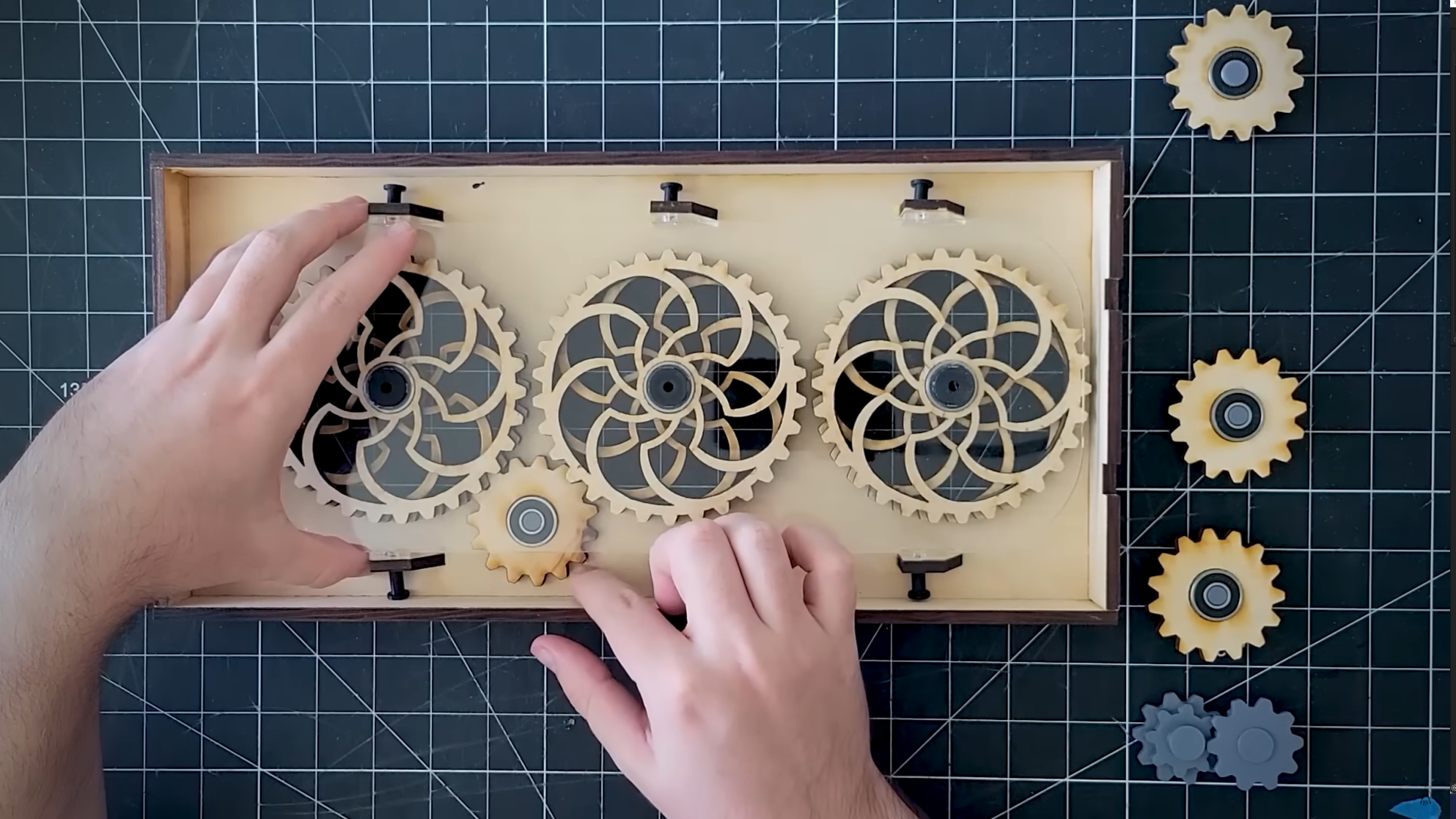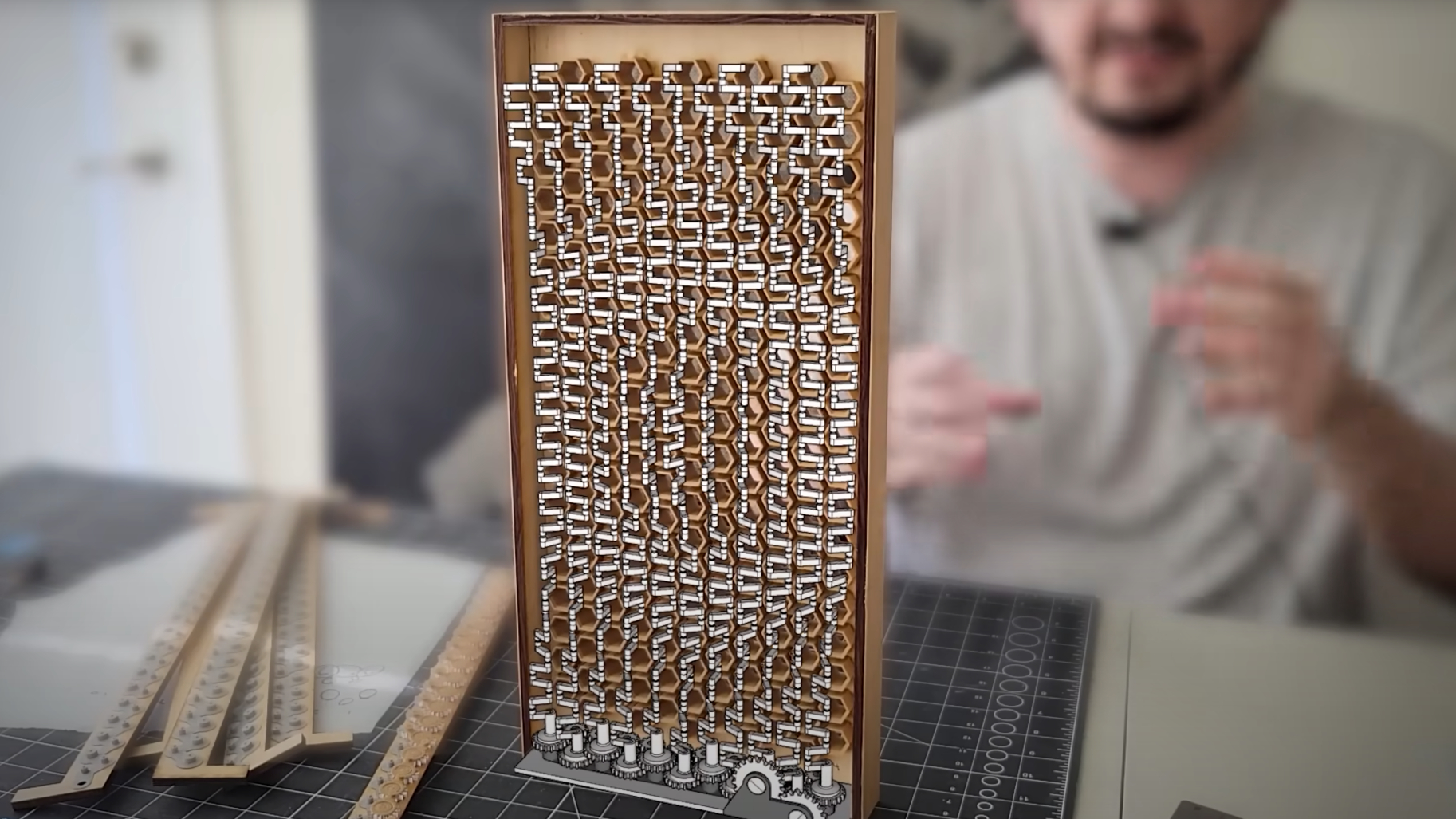Sometimes you come across a project that makes you wonder if you're really handy at anything. This is one of those projects. A PC case with a simple yet stunning effect of gradually shifting in a never-ending loop, made by Ideal Idea; once you see all the work that goes into it, you'll maybe start to doubt your own DIY abilities.
Inspired by CyberPower's kinetic PC case, which is still yet to come out, Ideal Idea sets out to create a masterpiece of custom DIY PC case design.
They start off by building the case surround for their existing PC case out of wood, which is a neat enough job even before they get to the more complex front panel.
The first design are three faux-fans on the front of the case that create a wavy, almost kaleidoscopic, look. It's lush, as we say colloquially, and relies on around 14 moving parts on the rear of the front panel, mostly gears and bearings hooked up to a slow-moving motor. It all snugly fits around the existing PC case in such a way that it's not actually all that bulky for the extra parts. It looks more or less like it's meant to be that way, which is a feat for a DIY project in itself.
You'd probably stop there, right? Job done. Nope. As if one kinetic case panel wasn't impressive enough, Ideal Idea makes two. And the second is much more complex than the first.

The second front panel design, my personal favourite, is a wavy hexagonal surface that bulges and shifts over time. Remember how that first panel used 14 moving parts to achieve a kinetic effect? This one was designed with 885. Damn. Though as you'll see if you check out the video, it doesn't entirely work out as planned.
You can see why so many pieces were required when you get to the mechanism behind the panel in this design. It's made up of many, many gears that shift each hexagonal piece out and in, over and over, as the motor spins a rod. Think of it like a crankshaft in a car—Ideal Idea even refers to the hexagon pieces as a piston, so the comparison mostly checks out.

Though this doesn't actually work. Some undiagnosed issue on a single set of gears working in tandem was causing it to get stuck, and that was just one row of gears of a total of 11 planned for the entire PC. Instead, Ideal Idea sets about using an improved version of another design, using fewer gears and longer shafts.
It ultimately works out, and the end result is an incredibly professional-looking kinetic PC case that made me audibly gasp when it was first shown working. I'm sure people would pay a whole lot of money for it, too, though the hours that went into it… I'm not sure I would want to foot the bill.
While Ideal Idea says they don't have a background in mechanical engineering, I am starting to wonder if it wasn't a lost calling. This is seriously awesome work.







